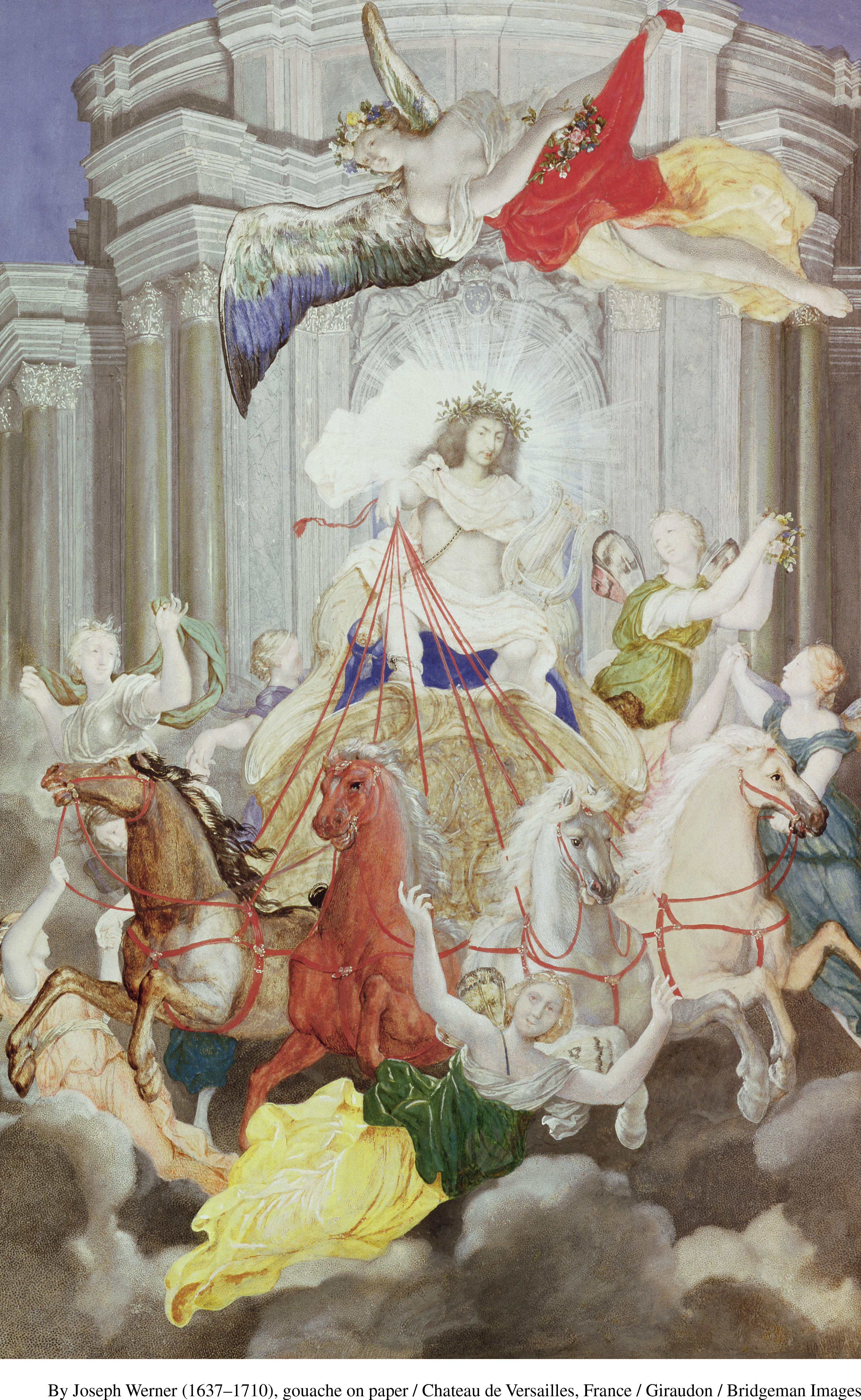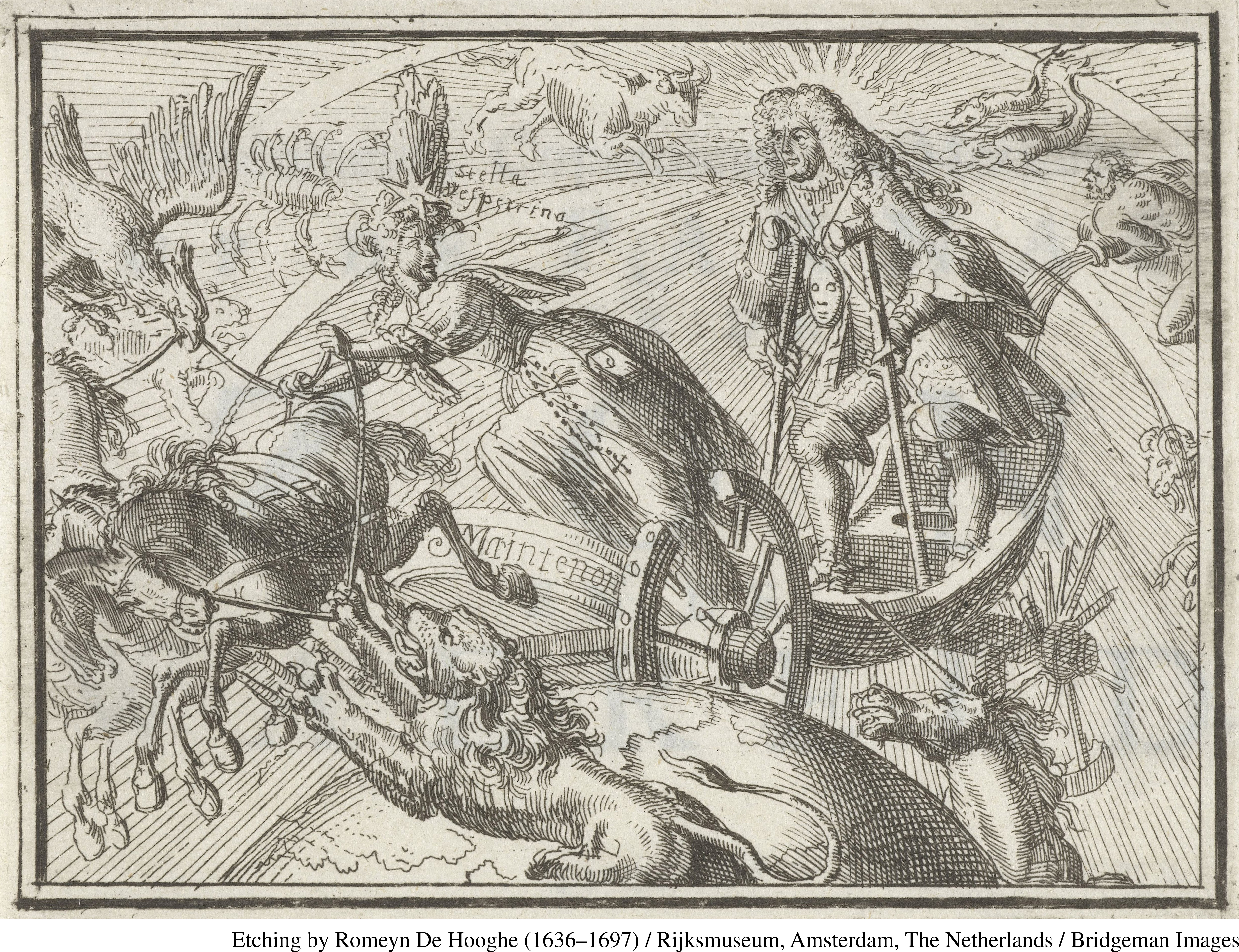Seeing History: Symbols and Power in the Age of Louis XIV


King Louis XIV’s power rested on more than his armies. He used every possible means to strengthen his image as an all-powerful ruler from building a magnificent new palace at Versailles to commissioning operas and ballets. He often asked painters or engravers to represent him as Apollo, the Greek god of the sun, and he surrounded himself at Versailles with sculptures, fountains, and paintings with symbols of Apollo. Louis’s opponents in Europe did not see him as a “sun king.” They conducted their own campaigns with symbols using prints and engravings to attack Louis’s wars.
The first image is a gouache (a kind of watercolor painting) from the 1660s by the Swiss artist Joseph Werner. Louis XIV commissioned him to provide paintings for the new Versailles palace. This one, “Louis XIV as Apollo Driving the Chariot of the Sun,” is an allegory; no one thought that Louis XIV was actually Apollo, but the painting makes viewers think of the king as like a Greek god, in this case driving the chariot that stands for the sun’s movement in the skies. It is preceded by a female allegory for the dawn of the day.
The second image is an etching done in 1701 called “Downfall of Louis XIV, the French Apollo,” by the Dutch artist Romeyn de Hooghe. It first appeared on the title page of a tract against Louis XIV. Here the artist reverses the Apollo theme to make fun of Louis, who is depicted as an old man on crutches standing over a chamber pot. His mistress Madame de Maintenon tries to drive the chariot, which is racing out of control. Allegorical figures of the Holy Roman Empire (the eagle) and the Dutch Republic (the lion) are stopping the horses, just as the alliance against Louis XIV hoped to stop him in the War of the Spanish Succession that had just begun.
Questions to Consider
- Why did Louis XIV use the theme of Apollo so often?
- Why did Romeyn de Hooghe use the Apollo theme to attack Louis XIV?